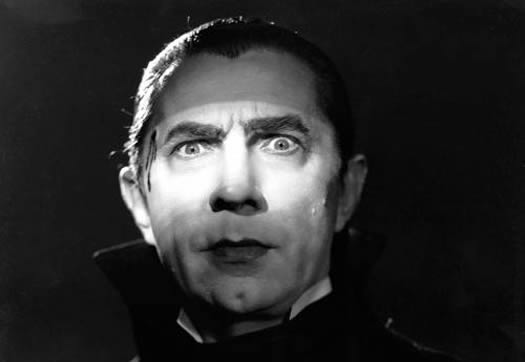Siena's vampire explainer

Bela Lugosi in the 1931 film Dracula
A while ago I heard a rumor that Siena College had its very own vampire expert.
Yes, a vampire expert.
Obviously I needed to look into that. So I picked up some garlic and a stake and went to check it out.
 Lisa Nevárez, an associate professor of English, laughs when people call her a "vampire expert."
Lisa Nevárez, an associate professor of English, laughs when people call her a "vampire expert."
Nevárez says she's always been captivated by vampires and grew up on Anne Rice novels. And she's developed a professional curiosity in the subject thanks in part to her specialties in Latina literature and British romanticism.
She also often teaches courses on the horror novel, many of which include vampires. Nevárez calls vampire novels a form of "escapism lit" that's especially popular in turbulent times. The first vampire story was published in 1819 and Nevárez says that introduced the romantic image of the vampire as this "sort of otherworldly, immortal creature."
When Bram Stroker's gothic novel Dracula was published in 1897, it really opened the vein. Dracula was seen as very attractive, seductive, international, says Nevárez. Since then, vampires have been morphing into increasingly sympathetic characters, such as the ones found in Anne Rice's novels. And more recently, of course, there's the Twilight books and movies.
So where does she think vampire culture will head next? Think ethnic vampires. So much of vampire culture stems from British and Irish roots that Nevárez thinks we may start seeing more non-European vampire stories, such as Marta Acosta's Latina vampire slayer, Milagro de los Santos.
Lugosi image via Wikipedia
Nevarez photo: Siena English department
Say Something!
We'd really like you to take part in the conversation here at All Over Albany. But we do have a few rules here. Don't worry, they're easy. The first: be kind. The second: treat everyone else with the same respect you'd like to see in return. Cool? Great, post away. Comments are moderated so it might take a little while for your comment to show up. Thanks for being patient.
Comments
"So where does she think vampire culture will head next? Think ethnic vampires. So much of vampire culture stems from British and Irish roots that Nevárez thinks we may start seeing more non-European vampire stories, such as Marta Acosta's Latina vampire slayer, Milagro de los Santos."
Uhhhh... for a "vampire expert," this woman's knowledge is sorely, sorely lacking. Vampiric creatures have been a part of human folklore across cultures and continents through many millennia. Aside from the plethora of non-European, non-Caucasian vampires in mainstream Western literature and cinema during the last 15-20 years or so, (Salma Hayek in "From Dusk 'Til Dawn," Wesley Snipes in "Blade," Aaliyah in "Queen of the Damned,") just about *every* human civilization in history has a prominent vampire story of some sort. (When medical technology was so lousy that a lot of people were accidentally buried alive, coupled with lack of a scientific explanation for some of the funky things that corpses can do as they decompose, it's not a stretch to figure out where all these similar cross-cultural fables of the undead come from.)
Granted, it's Wikipedia, but here's a link to the huge number of easily verifiable vampire characters from every culture and corner of the world that were around long, long before John Polidori published "The Vampyre" in the early 1800s:
http://en.wikipedia.org/wiki/List_of_vampires_in_folklore_and_mythology
Seriously, I'd *love* to see a real twist on the particular style of played-out Dracula ripoffs that have been popular in the West for nearly 200 years, too. Somehow, I don't see a Latina version of Buffy as a particularly original variation on that tired theme. (What, were all the wonderful variations on the ancient "La Llorona" urban legends of Latin America too original?)
... said Kim on Dec 21, 2009 at 7:21 PM | link